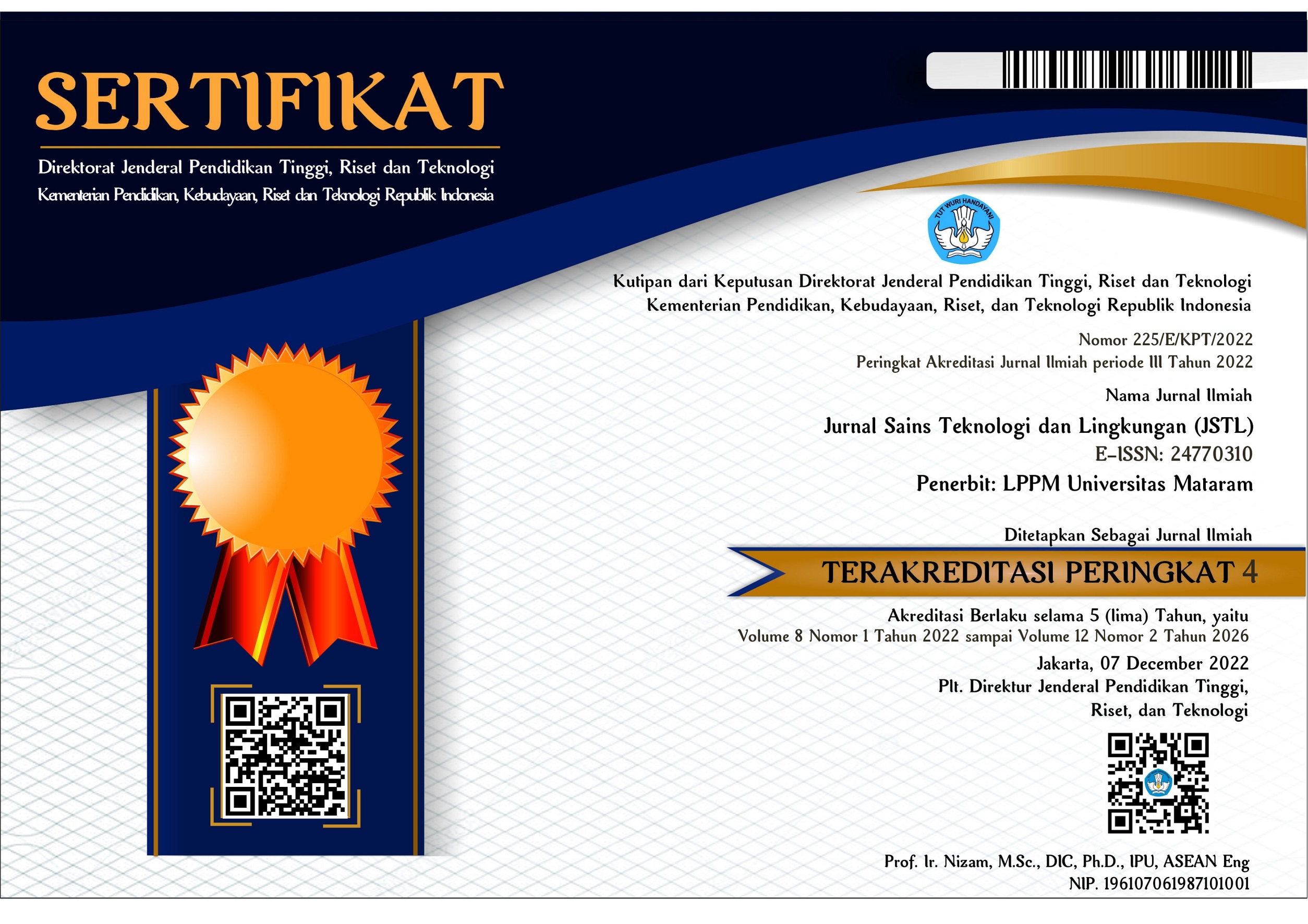Kesesuaian Kawasan Hutan Peo Waume Sebagai Ekowisata Mangrove Berkelanjutan Di Pulau Kapota, Kabupaten Wakatobi
DOI:
https://doi.org/10.29303/jstl.v9i2.389Keywords:
Ecotourism, Mangrove, SustainabilityAbstract
The Peo Waume forest is a mangrove area located north of Kapota Island, Wakatobi Regency, Southeast Sulawesi. Visually, this area has the potential to be used by the community as an ecotourism object. Until now, this forest area has not been utilized optimally, although indirectly the ecological function of this forest supports various lives. Utilization of forest areas as ecotourism objects is estimated to be able to contribute to the socio-economic community, especially in Wakatobi Regency which is included in the National Tourism Strategic Area. This study aims to analyze the suitability of the Peo Waume Forest Area to be used as an eco-tourism area and to analyze its sustainability index by taking into account the ecological, socio-economic, and institutional dimensions. The results showed that the Peo Waume Forest Area was suitable to be used as a mangrove ecotourism object with an ecotourism suitability index of 2.15. The parameters used are mangrove thickness, mangrove density, mangrove type, tidal height, and diversity of biota objects. On the other hand, the sustainability index on the ecological dimension is 64.02, the socio-economic and culture dimension is 54.82and the institutional dimension is 50.94, indicating that the Peo Waume Forest sustainability index is insufficient. The lever factors that greatly influence the sustainability of the Peo Waume Forest Area are the attributes of community income, community waste management, and law enforcement.References
Andronicus, F. Yulianda, A. Fahrudin. 2016. Kajian keberlanjutan pengelolaan Ekowisata berbasis daerah perlindungan laut (DPL) di Pesisir Desa Bahoi, Minahasa Utaram Sulawesi Utara. Jemis 4: 1-9.
Fauzi, A., S. Anna. 2002. Evaluasi status keberlanjutan pembangunan perikanan: aplikasi pendekatan rapfish studi kasus perairan pesisir DKI Jakarta. Jurnal Pesisir dan Lautan 4:43-55.
Finlayson, C.M. 2016. Mangroves. p. 93-108 In C. Finlayson, G. Milton, R. Prentice, N. Davidson (eds). The Wetland Book. Springer Science.
Jamili, J., D. Setiadi, I. Qayim, E. Guharja. 2009. Struktur dan komposisi mangrove di Pulau KaledupaTaman Nasional Wakatobi, Sulawesi Tenggara. Jurnal Ilmu Kelautan 14: 197-206.
Khakim, N., A. Mustofa, A. Wicaksono, W. Lazuardi, D.N.D. Pratama, M.A. Marfai. 2021. Adaptation of mangrove ecotourism management to coastal environmentchanges in the special region of Yogyakarta. Journal of Environmental Managementand Tourism 12:754-765.
Lacerda, L.D., J.E. Conde, B. Kjerver, R. Alvarez-León R, C. Alarcón, J. Polania. 2002. American Mangroves. p. 52-54. Mangrove Ecosystem Function and Management. Springer-Verlag Berlin Heidelberg.
Ningsih, M.D.S., R. Hamidy, R.M. Putra. 2022. Analisis keberlanjutan ekowisata mangrove di Mengkapan Siak. Jurnal Ilmu Lingkungan 16: 25-42.
Pratama, C., M. Ramli, Ira. 2021. Kepadatan jenis saccostrea cucullata pada ekosistem mangrove di pulau kapota kecamatan wangi - wangi selatan kabupaten wakatobi. Sapa Laut 6: 323-328.
Sagala, N., I.R. Pellokila. 2019. Strategi pengembangan ekowisata hutan mangrove di kawasan pantai oesapa. Jurnal Tourism 2: 47-63.
Tuwo, A. 2011. Pengelolaan Ekowisata Pesisir dan Laut. Brilian Internasional, Surabaya.
Yulianda, F. 2019. Ekowisata Perairan: Suatu Konsep Kesesuaian dan Daya Dukung Wisata Bahari dan Wisata Air Tawar. IPB Press, Bogor
Downloads
Published
Issue
Section
License

This work is licensed under a Creative Commons Attribution-NonCommercial-ShareAlike 4.0 International License.


1.png)











